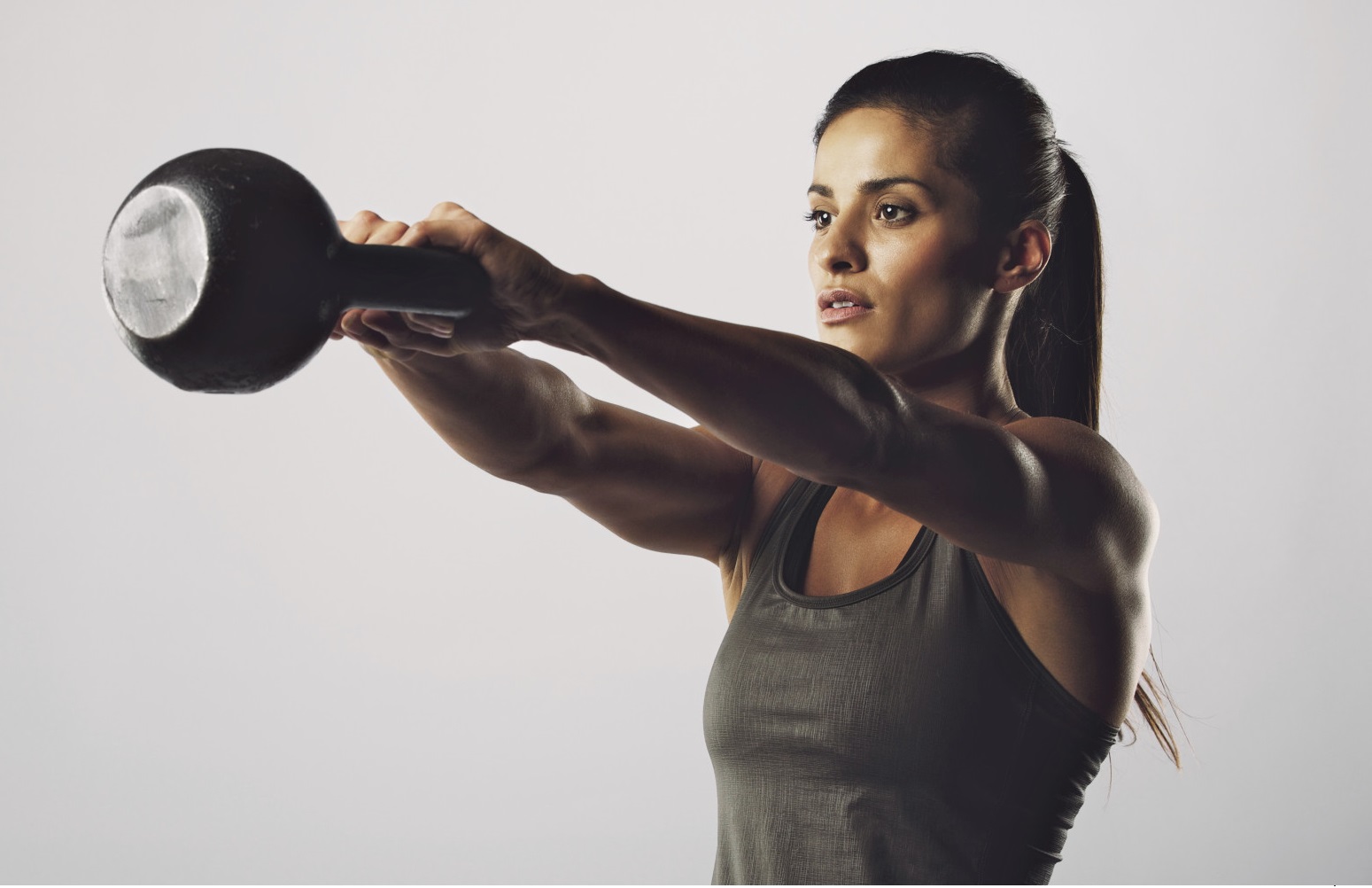
If you are looking for an exercise that can work the posterior chain to overcome all the negative effects of sitting. The Kettlebell Swing can be a good choice. This super exercise can strengthen your heart and help you lose weight, too.
Benefits
Kettle bell swing improves hip mobility, strength and power which can further help achieve success in a wide range of daily activities, such as carrying kids, loading and unloading a car, carrying objects up and down stairs, and a variety of household tasks involving bending and lifting.
Additional studies have shown that the kettlebell swing is an effective exercise for improving aerobic efficiency, enhancing power output of the hips extensors as well as elevating levels of the hormones that promote muscle growth. Farrar, Mayhew and Koch (2010), for example, found that a common kettlebell workout that challenges participants to complete as many two-handed swings as possible in 12 minutes created a metabolic challenge sufficient to improve overall aerobic capacity. In another study, Budnar and associates (2014) found that a workout featuring kettlebell swings performed for a 30-second period of work followed by a 30-second rest interval for 12 minutes helped elevate levels of testosterone and growth hormone, both of which are important for promoting protein synthesis and increasing muscle size.
Step-by-Step Instructions
- Stand with feet shoulder-width apart and knees slightly bent. Place a kettlebell on the floor between the feet.
- Keep the spine long and hinge forward at the hips to lean down and grip the kettlebell with both hands in a palms-down grip. (Tip: Squeeze the handle in both hands to maintain a firm grip during the exercise.)
- Keep the shins vertical to the floor and the spine straight as you pull the kettlebell back between the legs.
- Quickly push the hips forward and pull the knees back to generate the forward momentum to swing the kettlebell forward and up in front of the body. The strength to move the weight should come from the legs and hips, NOT the shoulders.
- The explosive extension of the hips should propel the kettlebell up to chest or shoulder height. (Tip: Inhale as the kettlebell is elevating and you are in a standing position.)
- As the kettlebell reaches the top of the move, brace the abdominal musclesand contract the arm and shoulder muscles to create a brief pause before pulling the kettlebell back down between the legs for the next repetition. (Tip: Exhale as you bring the kettlebell back down and hinge forward at your hips.)
- Do not stand up between reps.
- Continue doing single reps for between 5 and 10 reps.
- Do between 3 and 5 sets.
It is important to note that a successful swing maintains muscle tension in the legs and core, which helps to generate mechanical energy from the elastic fascia and connective tissue. The rapid downward movement of the weight combined with the quick forward flexion at the hips allows the elastic fascia and connective tissue of the posterior chain muscles to lengthen and store mechanical energy, which is then released when the hips snap forward to initiate the upward movement of the swing.
| Learning the Hip Hinge Aiming to push the hips back and maintaining a neutral spine is a good start, but for most people this isn’t enough. Even when people are cued to push their hips back and avoid knee flexion, the majority end up doing a poorly performed squat. to start, picture a door hinge. The joint in the middle rotates while the side brackets remain rigid. This, in a nutshell, is how hip hinging works. Thetorso is braced and held rigid on the north side of the hips. Below the border, there’s a relatively stiff lower-body guided by hamstring tension. The only dramatic movement is at the hips. |
